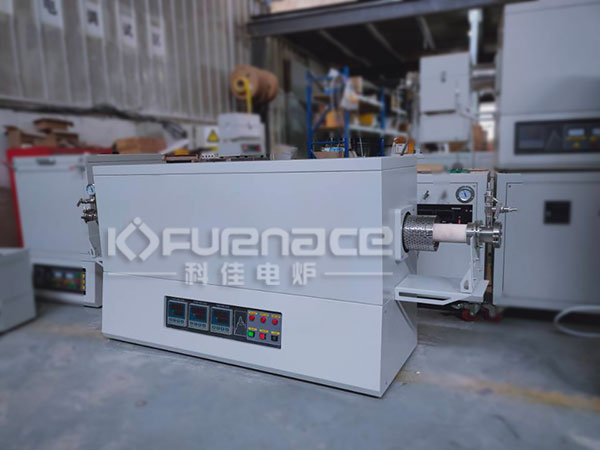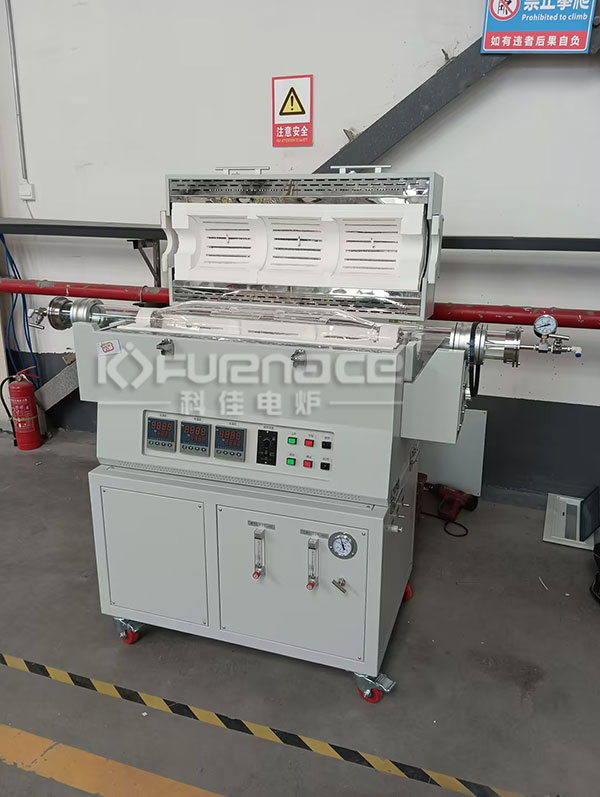When purchasing an experimental gradient tube furnace, multiple factors need to be considered to ensure that the selected equipment can meet the experimental requirements and have good performance. Let’s take a look at what aspects to pay attention to when purchasing an experimental gradient tube furnace!

Three commonly used gradient tube furnaces (click on the image to view product details)
1. Temperature range and heating element
Temperature range: Select the appropriate temperature range according to experimental requirements. The temperature range of experimental gradient tube furnaces can range from several hundred degrees Celsius to several thousand degrees Celsius. Ensure that the maximum temperature of the selected equipment meets the experimental requirements and has a certain temperature adjustment range.
Heating elements: Common heating elements include resistance wires, silicon carbide rods, and silicon molybdenum rods. The price of resistance wire is relatively low, but its applicable temperature range is narrow; Silicon carbon rods perform well in medium to high temperature environments; Silicon molybdenum rods can withstand higher temperatures. Select appropriate heating elements based on specific temperature requirements.
2. Furnace tube material and size
Furnace tube material: The furnace tube material directly affects the service life and performance of the equipment. Quartz tubes have good chemical stability and high temperature resistance, making them suitable for most routine experiments; Corundum tubes are more wear-resistant and corrosion-resistant, suitable for some special chemical treatment processes; Metal pipes such as stainless steel pipes have advantages in certain specific industrial applications. Select the appropriate furnace tube material according to the experimental requirements.
Pipe diameter and length: Pipe diameter and length directly affect the processing capacity and scope of application of the equipment. Select appropriate pipe diameter and length based on the size and shape of the sample to be processed in the experiment, to ensure that the sample can be fully heated and easy to operate.
3. Temperature control accuracy and temperature uniformity
Temperature control accuracy: A high-precision temperature control system can ensure temperature stability during the experimental process, improve the reliability and reproducibility of experimental results. Understand the temperature control accuracy of the equipment and ensure that it meets the experimental requirements.
Temperature uniformity: The length of the heating zone determines the temperature uniformity of the equipment. A longer heating zone can provide a more uniform temperature field, suitable for experiments that require high temperature uniformity. Evaluate the performance of the device by understanding its temperature uniformity indicators or conducting actual tests.
4. Atmosphere control and safety protection
Atmosphere control: Many experiments require specific atmospheric conditions to be conducted. Therefore, it is important to choose a tube furnace with good atmosphere control function. Common atmosphere control functions include vacuum, inert gas protection, etc.
Safety protection: The equipment should have comprehensive safety protection functions, such as over temperature alarm, leakage protection, emergency shutdown, etc., to ensure the safety of operators and equipment. At the same time, the furnace body should be designed with a reasonable heat dissipation system to prevent safety accidents caused by excessive heat.
5. Brand and after-sales service
Brand selection: Brands with good reputations are usually more secure in terms of quality control and technical support. Choosing a brand with a good reputation and credibility can reduce purchasing risks and provide a better user experience.
After sales service: Understand the after-sales service provided by the manufacturer, such as installation and debugging, training, warranty period, etc. Good after-sales service can ensure that any problems encountered during the use of the equipment can be resolved in a timely manner.

Customized Multi Gradient Rotating Tube Furnace (Click on the image to view product details)
In general, when purchasing an experimental gradient tube furnace, it is necessary to comprehensively consider multiple factors such as temperature range, heating elements, furnace tube material and size, temperature control accuracy and uniformity, atmosphere control and safety protection, as well as brand and after-sales service. By comprehensively evaluating these factors, good equipment suitable for experimental needs can be selected.Click to learn more tube furnaces! Or click on online customer service to learn more about product information!